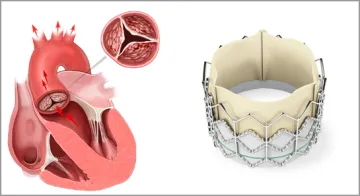Banner University Medical Center at the University of Arizona is the first in Southern Arizona that has been approved to use the Transcatheter Aortic Valve Replacement (TAVR). The procedure is for patients with aortic valve stenosis who, for a variety of health reasons, are not candidates for other types of open-heart surgery.

Our Valve Clinic offers patients with heart valve disease optimal, specialized care, through a multi-disciplinary team approach. TAVR is our most recent innovation and complements other less invasive options, such as surgical robotics and catheter-based treatments that have already been established at our center for the treatment of aortic, mitral, and tricuspid valve diseases. The procedure uses similar technology as a balloon angioplasty and coronary stenting procedure; the TAVR device collapses to a very small diameter (about the circumference of a pencil) and is crimped onto the balloon device. The cardiologist then positions the replacement valve inside the patient's natural aortic valve and inflates the balloon. This causes the new valve to expand, pushing the faulty one aside. The valve begins to function as soon as the balloon deflates, permitting immediate flow of blood to the heart. Patients who are selected to receive a new TAVR heart valve can be confident the replacement valve will be implanted through a small incision near the femoral artery in the groin, eliminating the need for a large incision in the chest. TAVR is a less invasive procedure that contributes to a quicker recovery with substantially less pain than is typically associated with more invasive open-heart surgeries.

